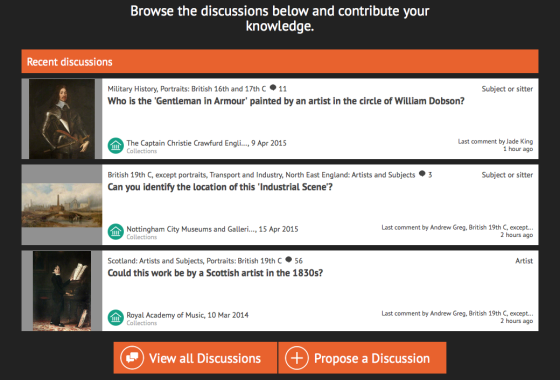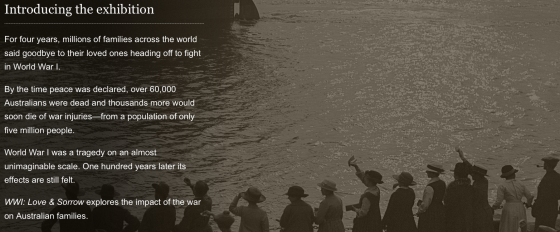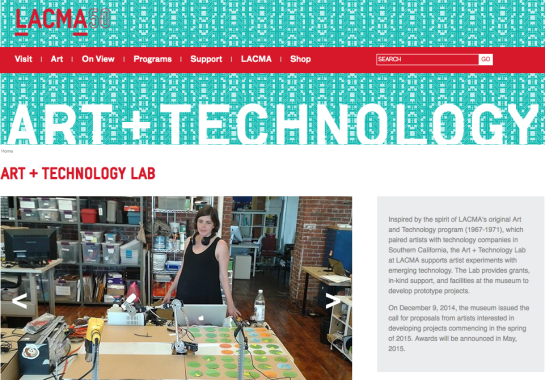
By Sarah Lutman, Principal at Lutman & Associates and author of the report, Like, Link, Share: How Cultural Institutions are Embracing Digital Technologies
Media funders take note. The museum community has been investing steadily in its collective media capabilities: in technical infrastructure, media production tools, staff expertise, and asset digitization. As a result, museums are becoming some of the 21st century’s most compelling conveners, storytellers, and media producers.
What’s the evidence? At last week’s Museums and the Web 2015, a four-day tech-a-palooza in downtown Chicago, 700 global museum tech folks gathered to share ideas, plans, and results within a friendly and spirited learning community. These media doers and makers are also the internal advocates for a re-set in museums’ orientation. The shift – well underway – is from museum as quiet citadel of scholarship and refuge, to museum as dynamic, visitor-centered civic hub. Art, or history, or science, are the wells museums draw from, but their collections are no longer mere “holdings,” not the end in and of themselves. Instead, collections are the beginnings – the impetus for conversations, for stories, and for sharing perspectives and instigating dialogue on diverse subjects that reach far beyond the objects on view.
Here are three examples of groundbreaking work.

The Art Detective is a UK-based partnership among the BBC, the Public Catalogue Foundation, and many museums and galleries. This crowd-sourcing information project launched in March 2014 and is built on top of an extensive database of art objects. The Art Detective platform connects digitized collections with both the general public and specialists in order to increase knowledge of publicly-held works of art. The public may propose a discussion about any work of art, engage in a discussion already underway, tag one of the 200,000 publicly-owned paintings with contextual information (which has the added advantage of improving search functions), “like” individual paintings and share them on social media, and add images to their personal online collection. Clicking on an individual work of art displays its physical location, history, and other data, along with a unique Art Detective link that allows users to contribute knowledge to that specific work. The website’s Discoveries section shows important breakthroughs in knowledge that have resulted from citizen engagement. Thus far more than 11,000 taggers have added information to more than 188,000 images. The project won Best of the Web 2015 overall excellence award from Museums and the Web’s selection committee.

Australia’s Melbourne Museum presented a conference paper on its extraordinary exhibition, WWI: Love and Sorrow, as part of a conference session on digital storytelling. The multi-sensory, multi-media exhibition explored the impact of the war on Australian families. To bring WWI history alive for visitors, the exhibition’s narrative seamlessly spanned installed objects and digital content delivered on mobile devices. Using The Storyteller app, visitors could choose from among eight families to see and hear history from their distinct perspectives, each “track” shared different content such as letters home and scrapbooks, and rich media like audio from interviews with families. Pre-configured mobile devices were lent to exhibition visitors, or visitors could download the app before or during their visit. (It is still available). In the gallery, digital content was location-dependent, based on the exhibition’s linear timeline. Using the app, visitors could also go back and forward in time, re-visit material, or change “characters” to experience the exhibition from multiple points of view.

In a conference paper titled, Museum Making: Creating with Emerging Technologies in Museums, MIT grad student Desi Gonzalez placed the current boom in museum-housed “maker spaces” within the historical role of museums as places of active making, not only passive observing. Her work draws on research into museum practice, as well as site visits to LACMA’s Art + Technology Lab, the Metropolitan Museum’s Media Lab, and Peabody-Essex Museum’s Maker Lounge.
Gonzalez shows that while these maker spaces and their related programming are described as breaking new ground in museums, they are, in fact, related to 19th century museum programming, when museums were places of art training and active learning, and when the range and diversity of exhibitions more broadly embraced the spectrum of “high and low” art. (For example during the 1880’s the Metropolitan Museum of Art offered classes in artisan skills such as woodworking and metalworking in its School of Industrial Arts.) Gonzalez ties museums’ contemporary offerings of things like hack-a-thons, tech workshops, and collaboration with the “maker movement,” as consistent with 19th century practice. It is interesting to note how many museums are offering the public experiences with 3-D printing, computer-aided design, video production, and other tech-related hands-on activities. From Gonzalez’ perspective, what’s old is new again.
Key attributes of Museums and the Web — as an entity and a series of conferences — are a core commitment to scholarship and learning, and the group’s enthusiastic sharing. All conference papers are available on-line on the Museums and the Web site, and new information and updates are actively shared between meetings using mechanisms like the #musetech and #musesocial hash tags. There is ample evidence of multi-museum collaboration, of new tools being built on open and shared platforms, and of candid conversation about what is and isn’t working with digital investments.
What’s also interesting is that this robust collaborative activity seems to be taking place without much of any notice from the institutional grantmaking sector. (Using Foundation Center data that served as the basis of Media Impact Funders’ 2013 report on digital culture, the 1,330 foundations whose grantmaking was analyzed awarded fewer than 35 grants to museums during that report’s 3-year study period.) Yet museum tech is filled with scrappy “intrepreneurs” whose work merits greater philanthropic attention and investment. Grantmakers often fret about the relevance of cultural institutions (or lack thereof), or wrongly think these institutions have failed to embrace younger and diverse audiences. Within communities like those gathered at Museums and the Web, grantmakers will discover the instigators and advocates of broader participation and innovation in these key cultural institutions. Why not help them lead the way?